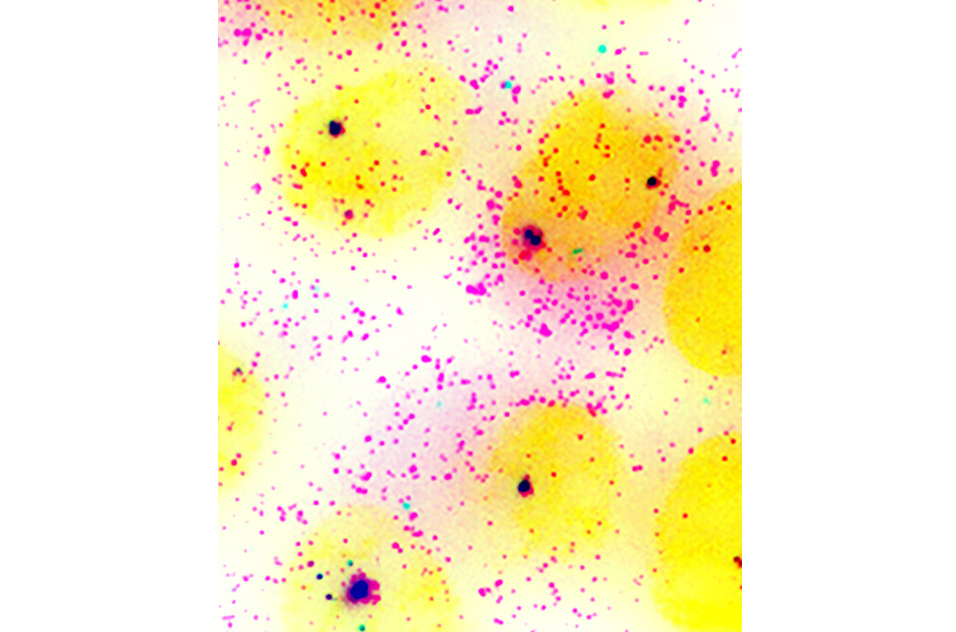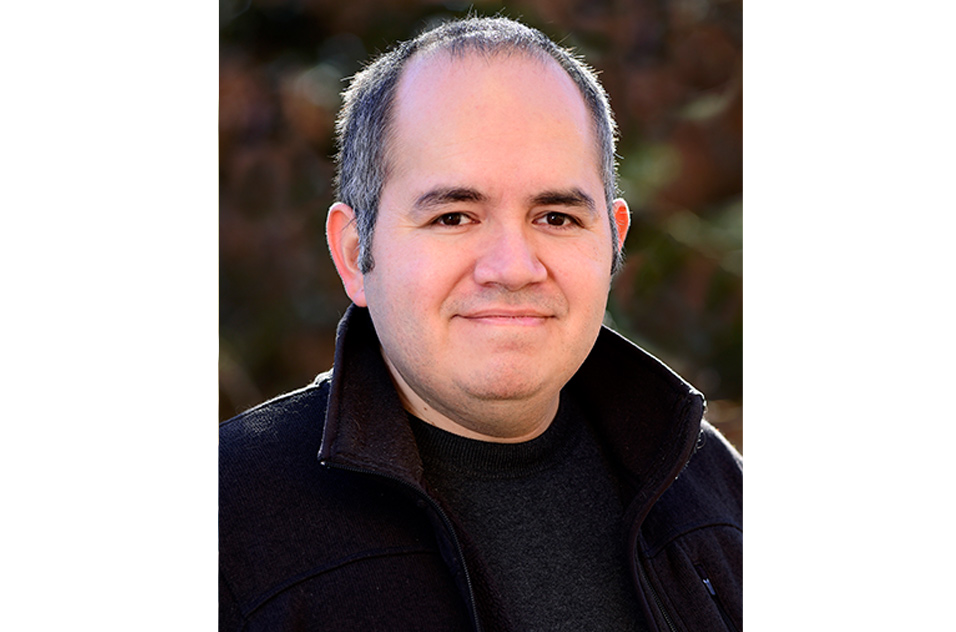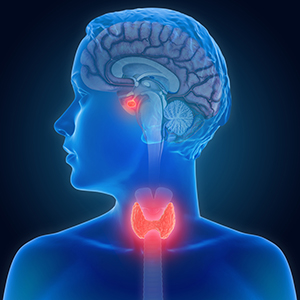 “We discovered unique ways that stress hormones influence the activation of human genes,” said Hoffman. (Photo courtesy of Steve McCaw / NIEHS)
“We discovered unique ways that stress hormones influence the activation of human genes,” said Hoffman. (Photo courtesy of Steve McCaw / NIEHS)Although stress is part of modern life, many people may not know that stress hormones regulate gene activity in breast cancer. Recently, a team of NIEHS researchers figured out the biological mechanism involved.
Stress hormones control whether human genes are turned on or off, according to NIEHS biologist Jackson Hoffman, Ph.D. (See sidebar.) These hormones exert control by affecting specialized regions of DNA called enhancers. He and his colleagues examined how treatment with the stress hormone dexamethasone (Dex) affected enhancers in breast cancer cells.
Hoffman, a member of the NIEHS Chromatin and Gene Expression Group, led by incoming NIEHS Deputy Director Trevor Archer, Ph.D., is co-lead author of a research study that looked at the glucocorticoid receptor (GR), which controls cells' response to stress hormones. The work was a collaboration between Archer’s lab and the institute’s Single Cell Dynamics Group, led by Joseph Rodriguez, Ph.D. Both research groups are part of the NIEHS Epigenetics and Stem Cell Biology Laboratory.
'There has been a lot of research on the role of the estrogen receptor and progesterone receptor in breast cancer, so we focused on the glucocorticoid receptor,' said Hoffman. 'As technology has progressed, we’ve been able to ask more detailed questions to understand the involvement of the glucocorticoid receptor in how stress hormones control breast cancer genes.'
 Archer said the research covered the scientific fields of transcription, epigenetics, and hormone biology. (Photo courtesy of Steve McCaw / NIEHS)
Archer said the research covered the scientific fields of transcription, epigenetics, and hormone biology. (Photo courtesy of Steve McCaw / NIEHS)Loop switching mechanism
The work focused on a gene called DNA damage inducible transcript 4 (DDIT4). The researchers chose that gene because it responds to many different stresses human cells undergo, such as those important in initiating tumor formation or the progression of cancer.
DDIT4 is located in a regulatory region of DNA, a place where GR binds to four separate enhancers. Team members deleted each of the four sites individually to determine whether DDIT4 got turned on or off.
In the absence of Dex, GR does not bind, and one of the enhancers causes the DNA to curve around so that the four enhancers form a loop and bind with each other. This loop prevents them from interacting with DDIT4, keeping gene activity low. In the presence of Dex, GR binds to the four enhancers and the loop between them becomes disrupted, allowing the other three enhancers to form a different loop with DDIT4 to turn it on.
'In what we call a loop switching mechanism, the DNA forms two different loops,' said NIEHS biologist Kevin Trotter, Ph.D., co-lead author of the paper and member of the Archer group. 'Hormone treatment causes a repressive loop to switch to an active loop that promotes gene activation in humans.'
Hormone regulation
 Trotter said the team was surprised to find that one loop suppressed gene activation, whereas hormone treatment relieved that suppression. (Photo courtesy of Steve McCaw / NIEHS)
Trotter said the team was surprised to find that one loop suppressed gene activation, whereas hormone treatment relieved that suppression. (Photo courtesy of Steve McCaw / NIEHS)The research demonstrated that stress hormones like Dex have a profound impact on enhancers in the breast cancer genome. Although the scientists were able to give a detailed mechanism for an individual gene, there are more genes to study.
'The exciting prospect is that there are probably hundreds, if not thousands, of other genes we can now investigate to see how these hormones function,' said Archer.
Citation: Hoffman JA, Trotter KW, Day CR, Ward JM, Inoue K, Rodriguez J, Archer TK. 2022. Multimodal regulatory elements within a hormone-specific super enhancer control a heterogeneous transcriptional response. Mol Cell; doi: 10.1016/j.molcel.2021.12.035 [Online 20 January 2022].












